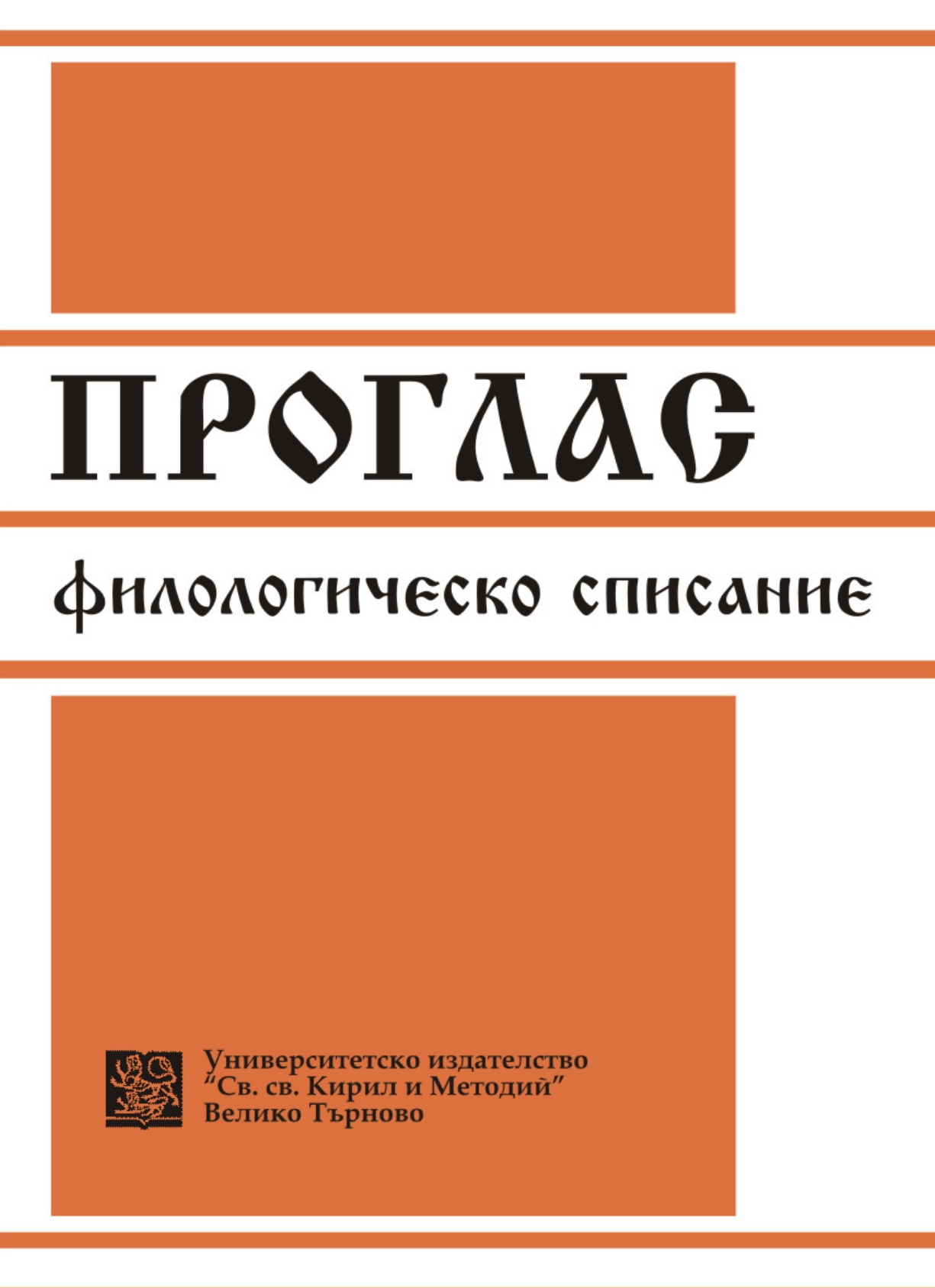
We kindly inform you that, as long as the subject affiliation of our 300.000+ articles is in progress, you might get unsufficient or no results on your third level or second level search. In this case, please broaden your search criteria.

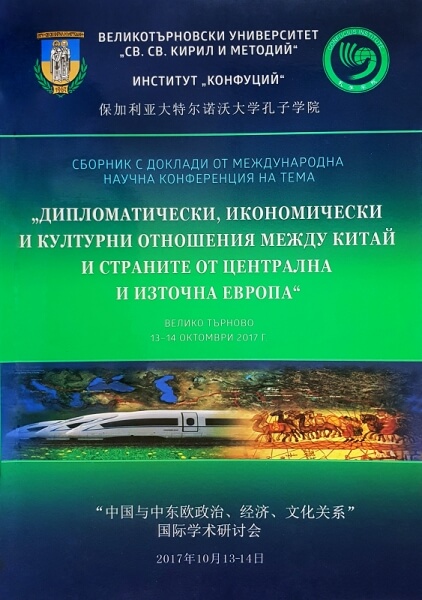
The modern world without Chinese thought would not exist. The future of civilizations will be intimately linked to the future of Chinese civilization. Chinese thought can teach all people the meaning of the words of honor and respect. I think that the sustainable development of the world must be on the model of society and the sustainable development of the world must be on the model of society. I think that the sustainable development of the world must be on the model of Xiaokang society and this will be the China‘s most important success.
More...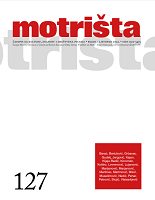
At the end of the sixties in Sarajevo, poetry was in vogue for the last time. True, I don't know what it was like in Moscow and Leningrad at that time, and whether, perhaps, Yeftushenko read his love and engaging poems in front of full stadiums, but in Sarajevo, in the hall of the Đuro Đaković Workers' University, the former Jewish Temple, all-night concerts were held poetry marathons, and one young man, a future famous local rock promoter and disc jockey, broke the world record for continuous recitation. Thousands of young men and women, today already seventy years old, in the ecstasy of Sixty-Eight and Che Guevara, listened to poets declaiming their verses, under the vivid illusion that poetry would change the world. And of course, that speaking, the voice that utters the poem and the audience that reacts to the poem, had to have an impact on the prevailing poetic poetics. Although there was no political order behind it, poetry was created for the broad masses of the people, and the poets behaved like the masses.
More...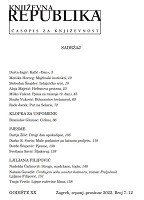
Prigodno ili ne, uvijek je teško sažeti ono najvažnije nečijeg djela pa i lika, a pogotovo je teško kada je autorica toliko nesklona osobnom izlaganju i trivijalnostima. Prije nekoliko sam godina izazvala negodovanje ili barem nerazumijevanje kada sam autoricu svrstala u tradiciju velikih moralista. Umjesto kao pohvala, to je shvaćeno kao da Ljiljani Filipović podmećem rigidno nametanje principa i pravila a ne nasljeđe, primjerice, francuskih prosvjetiteljskih aforizama koji osporavaju autoritete, prokazuju hipokriziju. Oštar i elegantan pogled La Rochefoucaulda, De la Bruyèrea i njihovih drugova već ući kako izaći iz Kantove »samo skrivljene nepunoljetnosti« i nastavlja se na rano preminulog Montaigneova prijatelja, Etiennea de La Boétiea, koji je, premda još ne punoljetan, pozvao na izlazak iz dobrovoljne porobljenosti.
More...
Moje nesvjesno je odabralo nesvjesno kao temu ovog teksta. Nije to bila dovoljno promišljena odluka, učinilo mi se kad sam ponovno krenula čitati Nesvjesno u filozofiji. Čini mi se da je u igru s nesvjesnim na sličan način ušla i Ljiljana Filipović. Jer, to je igra bez granica: Hoće li ikad »ja« stati na mjesto nesvjesnog?
More...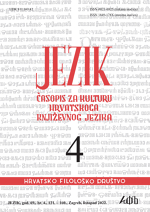
Reader M. M., a proofreader for a reputable Croatian newspaper, asked us if the genitive form of the plural noun company > vrtaka is valid. The noun company is not a new noun, it is not a novelty of our time. It is also confirmed in Šulek's Dictionary of Scientific Nomenclature from 1874 (p. 1202) in the form of tvrdka as bohemianism in the botanical nomenclature (lat. sterium), but also the translation of tal. the word firm. Here we are talking about the company as a company or enterprise, so not as a botanical name.
More...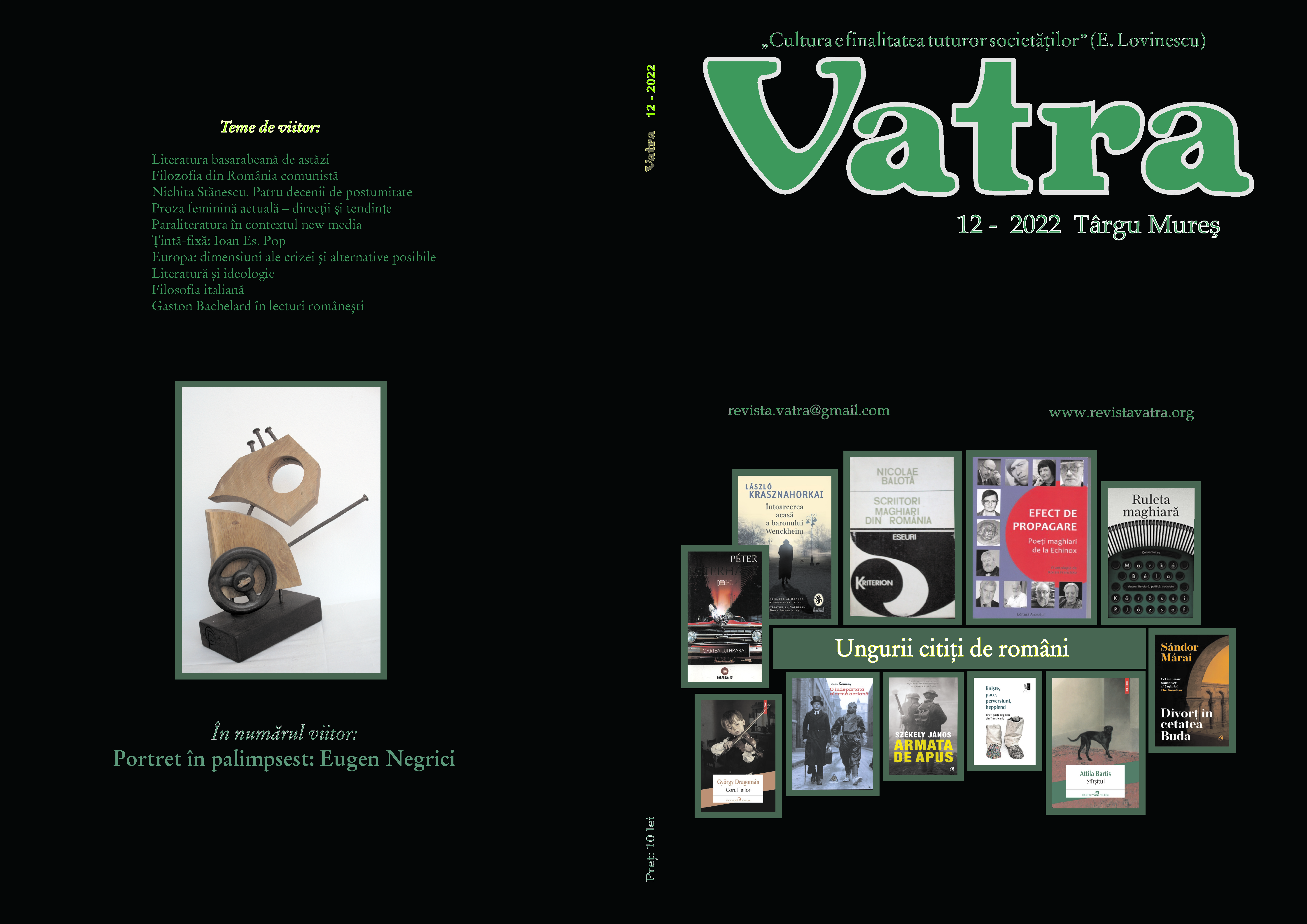
Pentru un timp îndelungat, prezența simultană a unui autor în câmpul literar român și maghiar, publicarea de texte literare în ambele limbi, a fost rară în contextul din România. Cu toate acestea, în perioada postmilenială, mai mulți autori ‒ Péter Demény, Andor Horváth, Tamás Mihók, Nóra Ugron etc. ‒ au scris și au publicat texte și volume în ambele limbi. Prezentarea va examina contextele, motivele și posibilitățile unei prezențe literare multilingve, concentrându-se asupra posibilelor diferențe poetice sau strategice, a procedeelor de adaptare și a practicilor de traducere culturală în textele autorilor bilingvi.
More...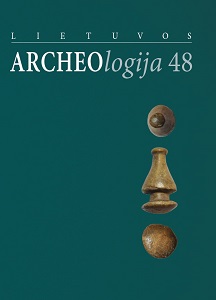
Archeologija kaip istorijos mokslo šaka, XIX a. II pusėje įgaudama vis didesnį populiarumą, užvaldė daugelio Europos inteligentų protus. Tenkindama scientistinius praeities tyrinėtojo poreikius, ji žadino nenumaldomą domėjimąsi tuo, ką būtų galima pavadinti daiktine senovės žmonių istorija. Bandydama įtvirtinti savo autonominės disciplinos statusą, archeologija ieškojo modernių galimybių, leidžiančių jai užsitikrinti deramą vietą pozityvizmo idėjų apibrėžtame pasaulyje.
More...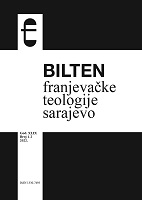
Njegov je životni zaokret bio zaista pavlovski snažan. Ovaj dobri 25-ogodišnjak Giovanni di Pietro Bernardone, od oca nazvan neobičnim nadimkom Francesco - „mali Francuz“, nije više želio ispunjavati ulogu bogatog mladića. Budući da je imao istančan osjećaj za izvedbu, u dramatičnoj je sceni, ispred katedrale San Rufino u svom rodnom gradu Asizu, vratio svome ocu, i na koncu društvu, sve ono što se činilo da priječi iskren život po Kristovu modelu: svoje privilegije, nasljedstvo, novac, čak i svoju odjeću. Spektakl i skandal, da, ali kao što je Pavlovo obraćenje „pred Damaskom“ navijestilo početak nove epohe, tako i odricanje predstavlja sve ono što će uslijediti u Franjinu životu, što bi trebalo sačinjavati „franjevački kontrapunkt“ (Jacque Le Goff): alternativni način života i nasljedovanja Isusa, što je nadahnuto misijskim govorom: „Na put ne nosite sa sobom torbu, drugu košulju, cipele, štap ...“ usp. Mt 10.
More...
Dana 6. ožujka 2022, samo koji dan nakon početka ruske invazije na Ukrajinu, patrijarh Ruske pravoslavne crkve Kiril, izjavio je da ovaj rat ima „ne fizičko, nego metafizičko značenje.“ To je jedina tvrdnja u patrijarhovom javnom očitovanju o ratu s kojom se slažem. Putinove metafizičke predodžbe povijesti i svijeta zbilja mi izgledaju kao važniji movens od njegovog imperijalizma. Ove ideje imaju takvu moć nad Putinom, da se mogu usporediti s religioznim mitom. Putin je demiurg koji je sredstvima propagande sam kreirao taj mit, ali je istodobno i rob vlastite propagande.
More...
Franjevačka klasična gim nazija je 24. i 25. lipnja 2022. bila radosno mjesto susreta jubilaraca koji su slavili pedesetu obljetnicu mature iz davne 1972. godine. Bio je to povijesni dan đaka starog kova koji su u toj klasičnoj gimnaziji dobili čvrste osnove znanja, odgoja i krila za životne letove. Tom se prigodom okupilo 20 slavljenika, od njih 60 u dva razreda od kojih je maturiralo 39 prije točno 50 godina. Nažalost preminulo je 10 kolega kojima smo i posvetili ovaj jubilej i molili za njih kao i za žive da izdrže do puta u vječnost. Zato smo bili radosni i tužni jer je to prohujalo s vihorom i što se moramo rastati i letjeti do vječnosti. Sve što smo naučili može se sažeti u tri riječi: Život ide dalje.
More...
Ove godine (2021) navršilo se sto godina od prvog pokušaja da se čovjek popne na vrh himalajskog gorostasa. Ta „žeđ“ da se ljudskom nogom stane na njegov vrh traje i danas. Što to ljude iz cijelog svijeta „tjera“ da se dođe do Himalaja i popnu se na vrh Mount Everesta? Pokušat ću odgovoriti ovom pričom. Mount Everest (tibetanski Chomolungma), najviši vrh na Zemlji (8884 m) nalazi se u istočnom dijelu Himalaje na granici Nepala i Tibeta (Kine). Everest je u donjem dijelu građen od kristalnih škriljevaca, a u gornjim dijelovima od karbonskih vapnenačkih škriljevaca i pješčenjaka.
More...
Ove godine (2022) navršilo se 20 godina od smrti Görana Kroppa. Postao je poznat široj svjetskoj populaciji 1996. godine kada je na biciklu iz rodne Švedske došao do Nepala i osvojio vrh svijeta, Mount Everest (8848 m). Što je to motiviralo Görana Kroppa da biciklom krene na tako dalek i odvažan put? Avanturizam, želja za dokazivanjem, podvig, znatiželja ili nešto drugo. Svakako o svim njegovim avanturama čitat ćemo u ovom radu.
More...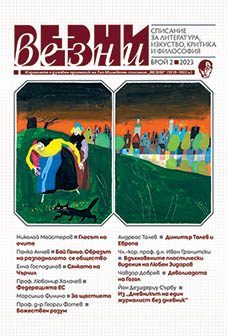



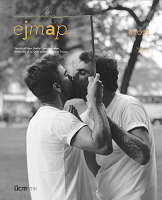
The philosophy of Lenka L. Lukačovičová’s work is based on her interest in our cultural and personal identity, collective memory, but also problems with functioning, and problems associated with current situations in the area where she works. The presented portfolio shows her broad interest scale, which is, however, anchored in the three most dominant themes. When processing them, she works with relationships with several media: happening, performance, installation and photography. She continuously focuses on issues of culture, time and space, on woman, mother and her internal experience; transformation and disappearance associated with the change of the urban environment, its gentrification in connection with the presentation “place-specific” in public space. Her key projects began to emerge in 2012, 2013 (Quo Vadis Galleria; Permanent Exposition) with focus mainly on how the cultural institution works. She continuously develops her interest in cultural and collective historical memory in a series of exhibitions called the Grey Book. From the collected photos of portraits of persecuted women (1950s to 1970s of the 20th century), she created hand-enlarged glass plates from digital archives; then she laid them out on the floor Status quo ante in the space of the Trnava Synagogue and left them to disappear. Post-media and political works were created, but they slowly became also a kind of silent meditation on the everyday life of post-communist Slovakia. Everyday life has also become a theme in her other projects: (Non)decisive Moments, 2020, and Lonely Planet Trnávka (from 2020). Here, her photographs remarkably deal with urban spaces, the surroundings, space where we live. She gradually exhibits them directly at the place of creation, in the Vitrine Gallery ZORA, a bulletin board that functioned as an information board at the dilapidated, non-functioning Zora Cinema in the local Trnávka district of Bratislava. She creates an imagined bedeker, an obscure Instagram account playing with the world brand – the online guide lonely_planet_trnavka. (Note: In addition, from 2021, she realized a series of other billboard and vitrine gallery exhibitions in the cities in Slovakia which seem to be at a freezing point). The last presented level of her work derives relatively intensively from the work of other Slovak authors from the 1970s to 1990s of the 20th century. She creates a free interpretation of the works with roots in performance, which are usually recorded by photography. She calls cycles with the prefix RE:, as they are fundamentally based on repetition of re-creation, citation, or appropriation. Lukačovičová processes topics whose starting points, as well as solutions, are extremely fluid and changeable. She layers them and asks herself questions.
More...
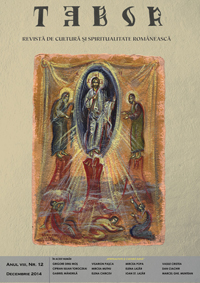
Ludwig Thiersch (1825-1909), member of the Nazarenes school, not only brought a vision indebted to Western art, but also attempted to distance himself from the specific national art. After 1856,the Athenian academic space will be usually filled only with Greeks teachers, who, however, being educated in different centers of Europe, will bring along some art influences from their area of training. Current or past artistic styles come to complete the wide universe of the Greek art of the late nineteenth century, as in Italy, Vienna, Munich and Paris.If artistic trends coming from the German and Bavarian space influenced Neo-Hellenic art, characterized by an opening towards a style dominated by academicism, even by a late romanticism, the influence of the French art will give a new spirit to the Greek creations from the beginning of XX century. Late Impressionism, but especially Symbolism, will unite in a homophonic utterance the Greek creators, divided into different categories and styles between the years 1930-1940. Aesthetically two diametrically opposed personalities, but great scholars of these times of many changes, are undoubtedly Konstantinos Parthenis and Fotis Kontoglou. Religious painting and icons of Konstantinos Parthenis (1878-1967) are in line with traditional typological point of view, but aesthetically, they have greater freedom of expression and interpretation. The forms, more simplified, are often reduced, drawing becomes geometrical and essential, and color, placed in ex- quisite combinations, not always follows Byzantine art heritage, but is moving towards European trends of the time: Post-Impressionism - Symbolism.In contrast to the free and creative character of Parthenis, Fotis (Photis) Kontoglou (1895-1965) will focus in his art all the Byzantine heritage and tradition. Since his beginings, Kontoglou, regarded as a traditional artist, is moving towards a theoretical and practical work, turning to early Byzantine painting. The major importance of the presence of Fotis Kontoglou in in the area of the Greek art and culture meant not only his own creation, but the revitalization of religious art in the early twentieth century. Testimonies over time are also his disciples, who exhibited and shared his achievements: Yiannis Tsarouchis, Nikos Engonopoulos, Spyros Vassiliou etc.
More...